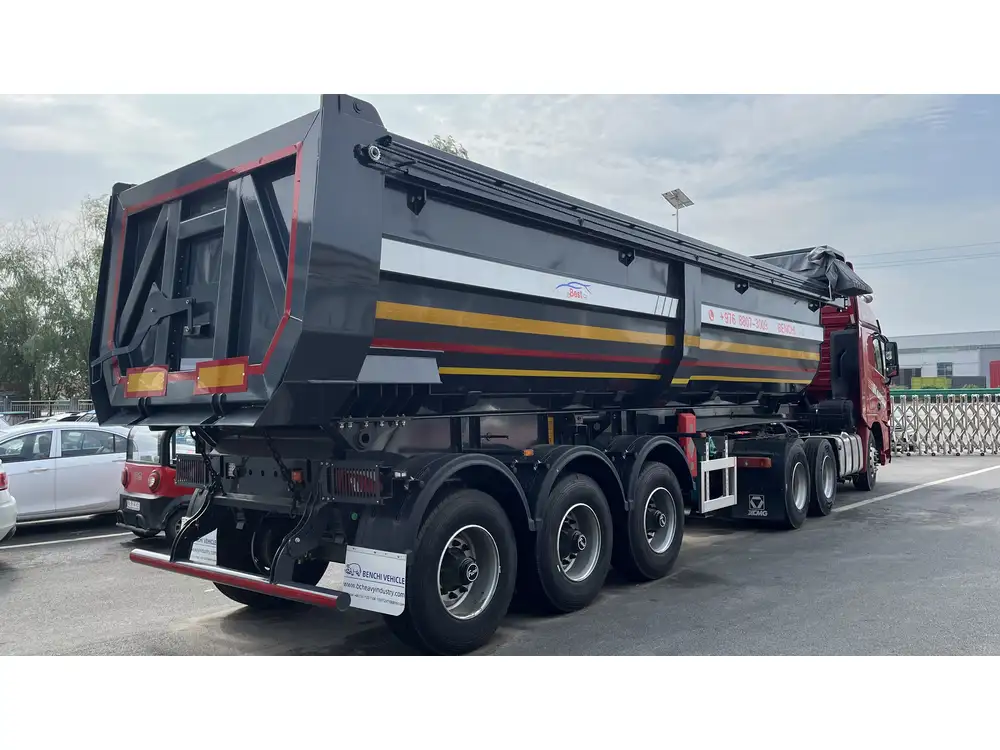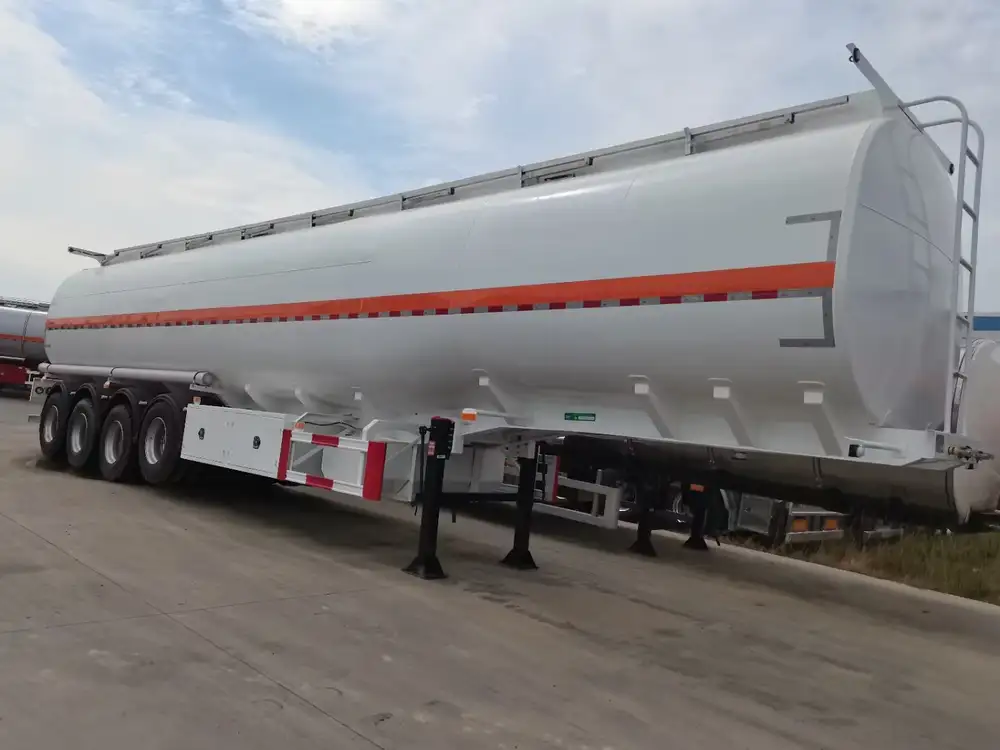Hitting a dump trailer can be a daunting task, whether for seasoned professionals in the transportation field or individuals approaching it for the first time. At our company, we understand the intricacies involved in handling dump trailers, especially when it comes to ensuring safety, efficiency, and optimal performance. Below, we delve into the nuances of hitting a dump trailer, covering an array of considerations that enhance your experience and effectiveness in managing this crucial piece of equipment.
Understanding Dump Trailers: Functionality and Design
Before diving into the specifics of hitting a dump trailer, it is important to establish a solid understanding of what dump trailers are and how they function. A dump trailer is a versatile piece of equipment primarily used in the transportation of bulk materials, such as soil, gravel, and other aggregates. Understanding the components and functionality of a dump trailer can significantly aid your experience.
Components of Dump Trailers
- Bed: The main structure for carrying materials. Usually constructed from reinforced steel or aluminum, it is designed to withstand heavy loads.
- Hydraulic System: Facilitates the lifting of the bed to dump the materials. The hydraulic jack is integral, controlling the angle and speed at which the bed raises and lowers.
- Frame: Provides the structural integrity of the trailer, ensuring the bed doesn’t collapse under pressure.
- Axles and Tires: Essential for mobility, ensuring that the trailer can handle the weight and is stable on the road.
Understanding these components is vital for both optimal loading/unloading and safe transportation practices.

Best Practices for Hitting a Dump Trailer
Effective techniques when hitting a dump trailer can significantly improve safety and efficiency. Let’s explore a systematic approach to ensure proper handling and operations.
Pre-Operational Checklist
- Inspect the Trailer: Conduct a detailed inspection of all parts—including the hydraulics, frame, tires, and lighting systems—before use.
- Check the Load: Ensure the load is balanced and does not exceed the prescribed limits. An unbalanced load can lead to instability and accidents.
- Verify Coupling: Before connecting the trailer, inspect the coupling mechanism to ensure it is secure and functional.
- Tire Pressure: Ensure all tires are adequately inflated and in good condition; check for wear and potential damages.
Proper Connection Techniques
- Align the Hitch: Position your vehicle such that the hitch aligns perfectly with the trailer coupler. Misalignment can lead to operational difficulties and hazards.
- Secure Connection: Once aligned, lower the hitch onto the coupler and ensure a secure lock in place. A minimum tug test is advisable to guarantee stability.
- Safety Chains: Attach safety chains in a crisscross pattern to provide redundancy in case of a disconnection while on the road.

Driving with a Dump Trailer: Key Considerations
When operating a vehicle with a dump trailer, understanding the unique driving characteristics that come into play is crucial.
Weight Distribution Impact
The distribution of weight will greatly affect driving dynamics. Here’s what to keep in mind:
| Factor | Effect on Driving Dynamics |
|---|---|
| Heavy Rear Load | Increased stopping distance, reduced steering responsiveness. |
| Unbalanced Load | Potential for trailer swaying, difficulties in handling turns and inclines. |
| Light Front Load | May cause the front of the towing vehicle to lift, compromising steering control. |
Cornering and Maneuvering
When handling a dump trailer, awareness of your turning radius is critical. Wide swings are typical; thus:
- Increase Turning Radius: Allow for more space when making turns to prevent potential collisions or roll-overs.
- Slow Down: Reduce speed when cornering, especially in sharper turns, to maintain control.

Safe Unloading Practices
The unloading process of a dump trailer can pose various risks if not conducted properly. Follow these tips to enhance safety during unloading:
- Chock the Trailer: Before unloading, ensure the trailer is stabilized using wheel chocks to prevent unintended movement.
- Position the Trailer: Ideally, park on level ground to ensure controlled unloading. Avoid unloading on steep slopes.
- Release Hydraulics Gradually: Engage and release the hydraulic system progressively to ensure a smooth dumping action, preventing debris from falling uncontrollably.
- Mount Constraints: For materials that may shift during unloading, consider using mounts or bracing to restrict unexpected movement.
Troubleshooting Common Issues
Even with careful practices, there may be times when issues arise. Here’s a structured approach to addressing common problems that may occur while hitting a dump trailer:
Hydraulic Failures
- Symptoms: Inability to lift or lower the trailer bed.
- Possible Causes: Low hydraulic fluid levels, leaks, or malfunctioning hydraulic pumps.
- Solutions: Check fluid levels first, looking for leaks or damaged hoses, then address as necessary. Consult a professional for persistent issues.

Load Shifting
- Symptoms: Unbalanced load, trailer swerving during transport.
- Possible Causes: Improper loading or failure to secure materials.
- Solutions: Reassess the load. Distribution and secure coatings can often alleviate this issue.
Tire Problems
- Symptoms: Vibration or difficulty steering.
- Possible Causes: Uneven or flat tires.
- Solutions: Regularly check tire pressure and replace any that show signs of wear and tear.
Summary
Hitting a dump trailer involves a multitude of factors, from understanding the specific design of the trailer to mastering safe loading and unloading techniques. By following best practices and being aware of potential issues, you can ensure both safety and efficiency in your operations.

Conclusion
Fueled by our commitment to providing superior semi-trailers and insightful knowledge, this guide aims to bridge the gap between theoretical knowledge and practical application. When hitting a dump trailer, remember that thorough preparation, attentive operation, and proactive troubleshooting are key to a seamless experience. Armed with this knowledge, you are now better equipped to tackle the challenges that arise when working with dump trailers, ensuring a safer and more effective operation.



